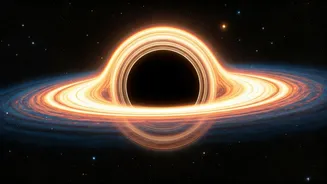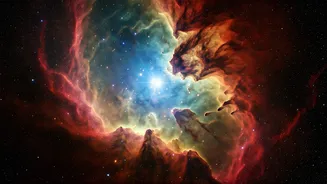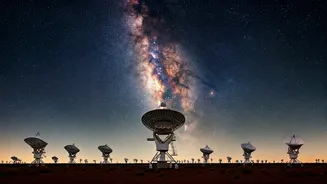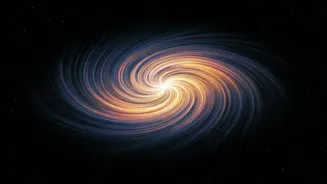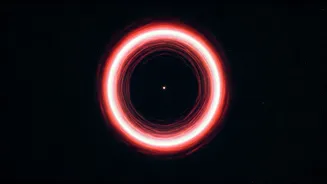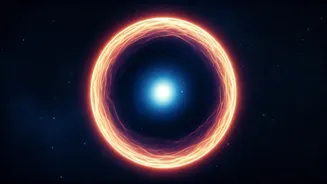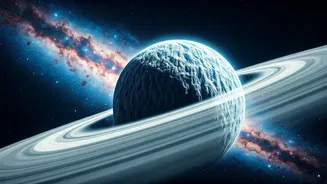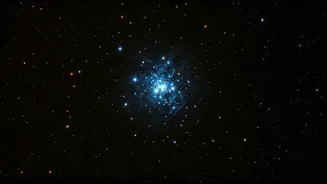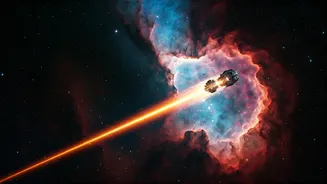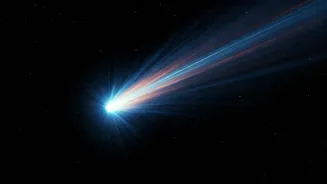Early Black Hole Sightings
The James Webb Space Telescope (JWST) has peered into the distant universe, identifying the earliest black holes known to exist. Astronomers are now able
to look back in time, practically to the beginning, thanks to the telescope's unique capabilities. This groundbreaking capability is providing invaluable insights into the conditions that existed shortly after the Big Bang. These findings are critical in understanding how black holes formed so early in the universe's history. These early black holes offer clues about the seeds that eventually evolved into the supermassive black holes found at the centers of galaxies today. The observations will continue to be refined, potentially leading to even earlier detections and a deeper comprehension of the universe's initial stages. These early black holes are located at the edge of observable universe, thus the discoveries made by the JWST are extremely crucial.
Black Hole Interactions
JWST's observations have revealed dramatic instances of black holes interacting with their galactic environments. A notable discovery is the evidence of a black hole plowing through a galaxy, leaving an enormous scar in its wake. This provides direct evidence of the immense power and influence that black holes wield over entire galaxies, and reveals how these interactions can reshape galactic structures over cosmic timescales. Such events offer valuable insight into galactic evolution. Additionally, JWST has observed black holes ejecting material and radiation, providing valuable data to scientists to understand how they grow and affect their surroundings. These observations also contribute to the understanding of how black holes influence the formation of new stars and the overall evolution of galaxies. It helps reveal the ways in which matter interacts and is either consumed or expelled. The telescope's capabilities enable astronomers to analyze these interactions in detail, helping them to refine models of galactic dynamics.
Mysterious Cosmic Objects
The James Webb Space Telescope may have stumbled upon a new class of cosmic objects, potentially black hole stars. This discovery has generated considerable excitement within the scientific community, as it challenges current theories about the nature and behavior of these objects. The nature and composition of these newly detected objects are subjects of ongoing investigation. This potential discovery could revolutionize the understanding of the formation and evolution of black holes. The identification of such new object will lead to significant revisions in our understanding of the universe's early history and the processes that shaped its current structure. Researchers will be able to refine their theories about how these complex systems function, including the roles played by dark matter and exotic physical processes.
Detailed Black Hole Imaging
Astronomers are using advanced techniques to gain unprecedented detail on black hole activity. Rare 'double zoom' methods have been used to view the corona of a black hole in remarkable detail. This allows them to examine the behavior of matter and energy in the extreme gravitational environment of a black hole. This advanced view offers unprecedented clarity on phenomena. High-resolution imaging has been instrumental in studying the complex structures that surround black holes and the intense processes that occur there. This in turn, provides greater insights into how black holes interact with their environment and how they influence the evolution of galaxies. These observations are revolutionizing the understanding of these objects, opening doors to new insights into the most extreme phenomena in the cosmos.
The 'Doomed' Star Discovery
JWST has revealed a 'doomed' star, offering a unique opportunity to study the final stages of a star's life just before it's consumed by a black hole. This rare insight has the potential to solve a decades-old mystery about these phenomena. The close proximity of the star and black hole allows researchers to study the accretion process. Studying this 'doomed' star offers a chance to observe the complex interplay between a star's final stages and the powerful gravitational forces of a black hole, thereby offering valuable information on stellar evolution and the mechanisms behind black hole accretion. The information gained could lead to more accurate models of black hole behavior and the ultimate fate of stars within their influence, giving a clear picture of the universe.
